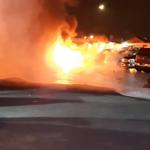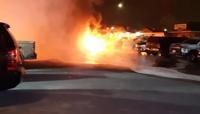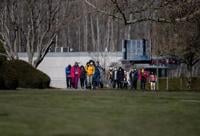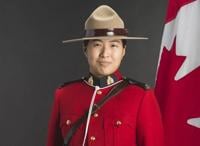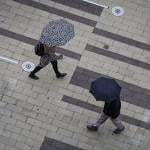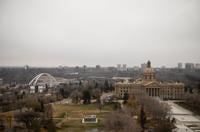PORT ALBERNI, B.C. - A Vancouver Island First Nation has announced the detection of 17 suspected unmarked graves at the site of a former residential school, in an emotional event that combined science and ceremony on Tuesday.
The Tseshaht First Nation, which took the lead in an 18-month effort to find potential graves of schoolchildren at the former Alberni Indian Residential School, also said interviews with survivors, historical records and other documents show 67 students died at the school.
"We need to remember that all of these students were just children," said Tseshaht Elected Chief Councillor Wahmeesh, whose English name is Ken Watts.
"They were just children. So … for those of you that are not from our communities, I want you to think about that, think about what would happen today if children who were five years old were removed from their homes.
"That's the reality that our communities have to live with," said Wahmeesh, who wore a traditional cedar headband.
The announcement was preceded by drumming and singing, and portions of the event were blacked out in a livestream because of cultural sensitivities.
Many at the ceremony wore orange, the colour that has come to represent those who died and the survivors of Canada's residential schools. Dozens of women slowly danced to the drumming, turning on the spot in their orange shawls.
Children from at least 90 communities spanning more than 70 First Nations attended the school when it operated from 1900 to 1973.
B.C. land surveyor GeoScan has been working on the project, using ground-penetrating radar to detect possible grave sites at the former school since last July.
Brian Whiting, a geophysics division manager with GeoScan, said at the announcement that the 17 suspected graves represent the minimum number believed to be on 12 of 100 hectares that were searched.
Sheri Meding, the lead researcher who did the work with historical records and survivors' statements, said many of the 67 children had died from medical conditions.
Meding said there were a number of recurring themes when interviewing survivors of the school, including forced abortions, multiple burial locations without markers, students finding skulls and human remains around the grounds and witnessing small coffins being taken out of the building at night.
Wahmeesh said it was essential to embark on what he called "this journey of truth" despite the process being difficult for survivors.
He said any legal investigations would have to be done by an independent body with Tseshaht consent, and not by the RCMP, because of the force’s role in residential schools and removing children from their homes.
He also called on Canada to conduct a review to determine the RCMP's role in the Alberni school.
"Why we can't just get over it, it's because it takes more than one generation to get over 150 years of colonization and abuse of our people," Wahmeesh said.
The Port Alberni site is the latest of several Canadian locations being searched for possible unmarked graves of children who died while being forced to attend residential schools.
In January, officials at the Williams Lake First Nation in B.C.'s Cariboo region said they detected 66 additional "reflections," marking possible graves, during the second phase of the search at former Catholic-run St. Joseph's Mission.
That number was in addition to the 93 possible grave sites already discovered at the former residential school before the latest phase of scanning.
This isn't the first time the Alberni Indian Residential School has been a focal point in the national discussion over the treatment of First Nations children.
In March 1995, former school dormitory supervisor Arthur Henry Plint pleaded guilty to 18 counts of indecent assault between 1948 and 1968.
Plint, who was 77 at the time, was sentenced to 11 years in prison.
B.C. Supreme Court Justice Douglas Hogarth described Plint as a sexual terrorist while also likening the Indian residential school system to "a form of institutionalized pedophilia."
The Alberni school was also one of six residential sites where the children were subjected to government-sanctioned nutrition experiments without the consent of their parents.
The children were sick and malnourished during the experiments from 1942 to 1952. Some were fed lard, broth and bread, while others were fed flour mixtures with vitamins.
Kimberly Murray, the special interlocutor appointed by the federal government to work with Indigenous communities on the unmarked graves around residential school sites, said they need to continue fighting to uncover records that would answer the "hard questions," such as the identity of the missing children and how they died.
Murray told a national gathering in Vancouver in January that survivors of the residential schools have a “right to know," and “deniers will continue to deny” without records that document the genocide of Indigenous Peoples.
The topic of residential schools' unmarked graves exploded into public discourse in May 2021, when the Tk’emlups te Secwepemc First Nation announced that more than 200 suspected unmarked graves had been identified on the grounds of a former school in Kamloops, B.C.
The Indian Residential Schools Resolution Health Support Program has a hotline to help residential school survivors and their relatives suffering with trauma invoked by the recall of past abuse. The number is 1-866-925-4419.
-- By Chuck Chiang in Vancouver
This report by ������ϲʹ������� was first published Feb. 21, 2023.
Note to readers: This is a corrected story. Previous version misspelled the last name as Watt.







